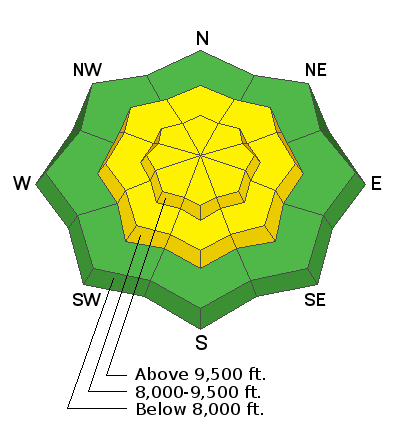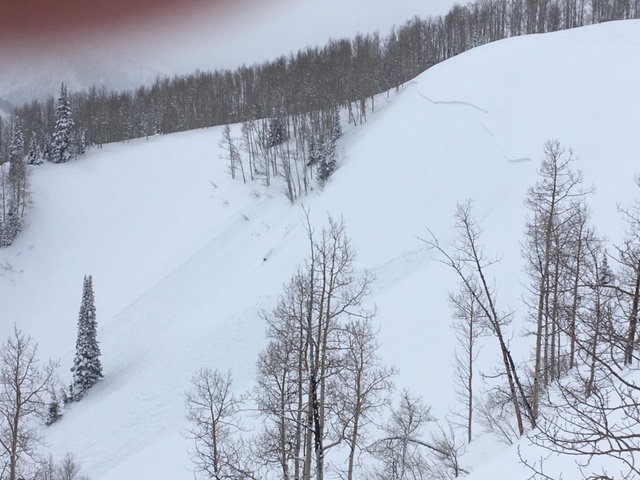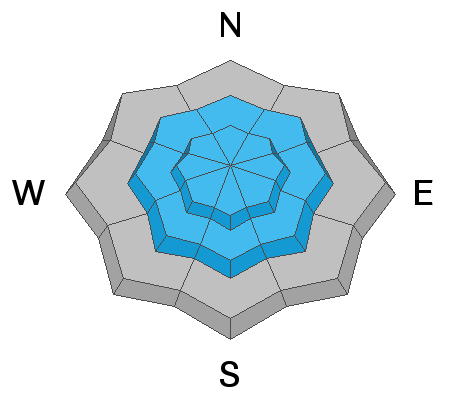Happy Daylight Savings.
Skies are overcast with light snow falling in the mountains. Under the spell of a weak warm front, most areas have picked up a 1-4" (5-6% density) overnight with slowly warming temperatures (mid-teens) and mercifully light winds from the south. The cool, shady terrain will still have 5 star riding but some southerlies will have a breakable sun crust beneath the new.
Total storm snow since March 5th:
Upper LCC: 29"-35" snow (2.53"-2.95" h20) Total snow depths are 140-160"
Upper BCC: 31"-38" snow (2.48"-3.46" h20) Snow depths are 130-150"
Park City Ridge: 17.5"-20" snow (0.65"- 2.0" h20) Snow depths are 80-120"
It's been a good run this winter with much of the state well above average-
see below (courtesy of our partners here at the Colorado Basin River Forecast Center - we share an office with them at the NWS)
For the next couple days, we can expect overcast to mostly cloudy skies, light southerly winds and a warming trend toward the upper 20s along the ridgelines. A weak storm system arrives Tuesday night into Wednesday which should be good for another 4-8" of snow. Get it while you can. Models suggest high and dry late week into the weekend...and beyond -
Ski area avalanche control teams triggered both shallow storm slabs and loose snow avalanches with ski cuts and explosives.
In the backcountry, reported avalanches include the following:
- Skiers walking the West Willow ridgeline remotely triggered the West Willow pocket 2' deep and 300' wide. This path is at 9600' on a northeast facing slope. (pc Agardy)
- An intentional cornice drop in South Monitor triggered a 12" deep and 40' wide pocket. This was at 9800' and northeast facing. (good write up here)
- In Snake Creek on the Wasatch backside, a snowmobiler on a test slope triggered a 18" deep soft slab avalanche on an east facing slope at 8000'. Another similar slide also triggered adjacent to this pocket.
Confused on locations? Steve Achelis (long time UAC board member) has a great map and web page and app. Wasatch Backcountry Skiing. They're great.
INFOMark White has an excellent photo of a typical graupel-pooling slab avalanche in upper Cardiff Fork that likely occurred Friday. More on this below -












